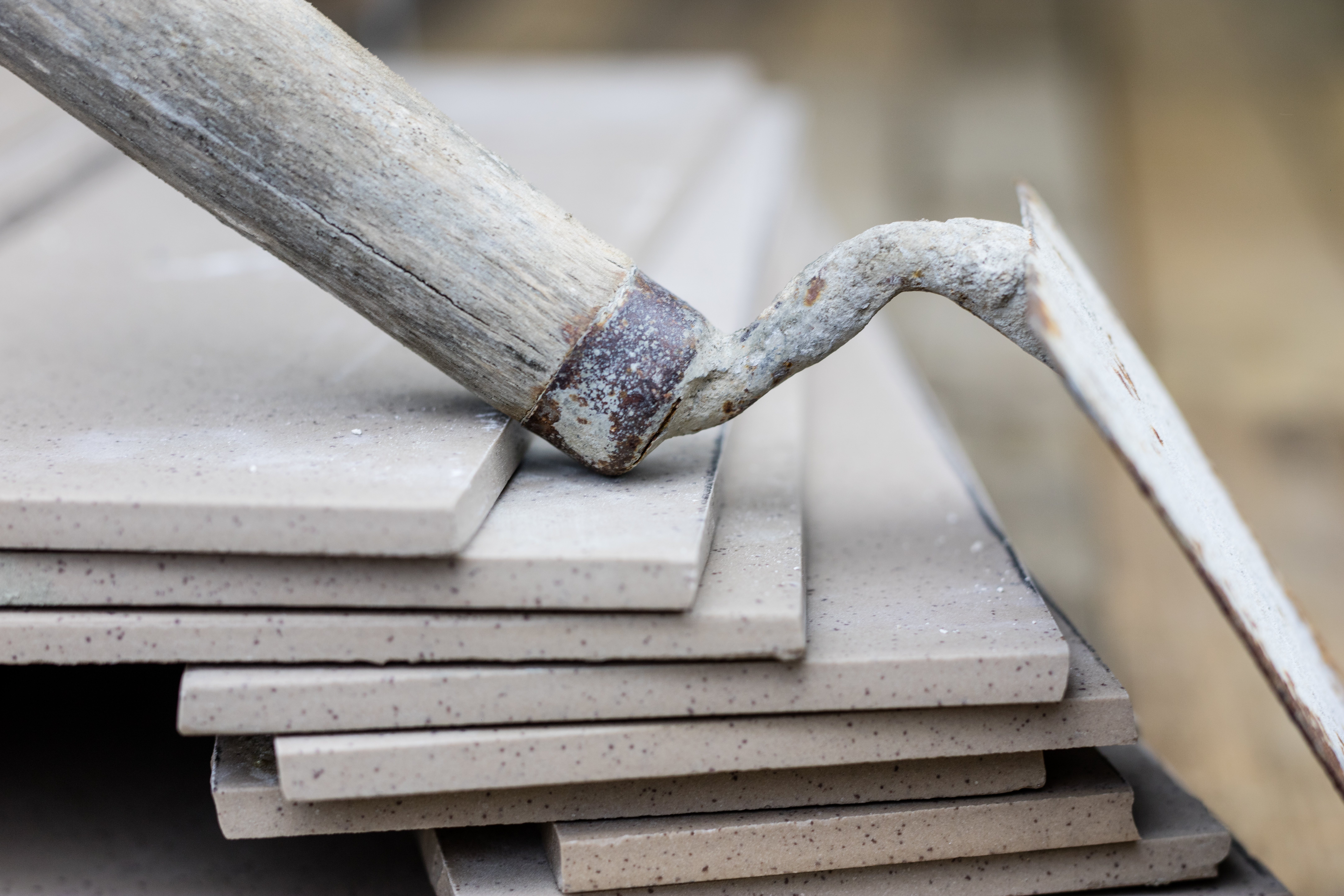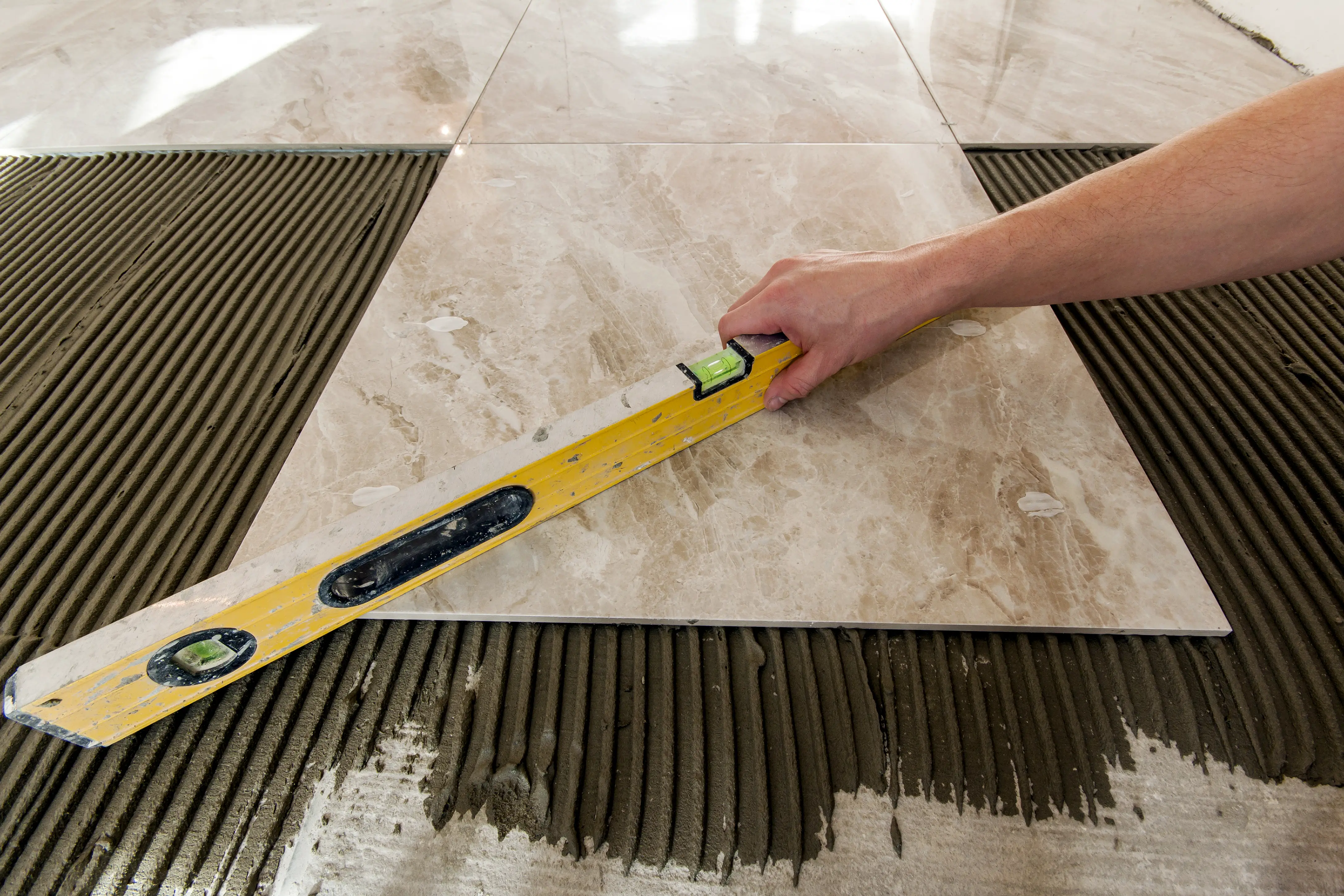
Tile is most commonly found indoors and on the floor, but its popularity on exterior walls is growing. This technique offers a sleek and long-lasting look, but only if done properly.
If you would like to tile the exterior walls of your house, make sure to choose a sturdy outdoor tile and that it is properly treated. Exterior tile is only a risky idea if you choose the wrong materials and are not careful with the process.
Once installed, exterior tile does not require much maintenance to remain sleek and beautiful. On the other hand, you must be careful and considerate while deciding on the style and kind of tile for your home.
Pros
Tiling exterior walls is a great option because the tiles will last a long time. They are beautiful, natural, don’t need paint, and are easy to clean.
By its nature, tile is durable and sturdy. Most tiles are made of natural stones or clay and are treated to be resilient and long-lasting. Additionally, the stone is not susceptible to natural ailments like insect infestations, bacteria, and mold. Because of this, tile will last longer than wood or vinyl siding on a house. Not only this, but it will also require less long-term maintenance.
But let’s say that, after a few years, you do want to update your look a little bit. It is totally possible to stain your tile or paint over it. But unless this is a choice you’re making for the curb appeal, it is a step you’ll get to avoid when you choose tile.
Stucco and siding need to be repainted after a few years to keep the look fresh and polished. In addition to aesthetic upkeep, tile is easier to clean than siding or stucco. The proper tile will be sealed and not porous, and won’t, therefore, absorb water, meaning you can clean it with a simple rinse off.
If you feel the need, you can use a tile cleaner, but those are typically designed for indoor stains and buildup. For occasions of a dust storm or mud, water is completely appropriate for cleaning. If you think it’s necessary, you can also use a sponge or soft scrubbing brush on the buildup. Only you will be able to assess the needs of your tile.
Cons
Tile on exterior walls is only problematic when it is not carefully and properly installed. Even in places of extreme weather and temperatures, the right kind of tile and the right steps in preparing the tile will yield long-lasting results.
Because of all the preparation that goes into tiling the exterior of a house, stucco or siding is a much safer option. Stucco and siding are also much more common, which means that there will be more professionals to lend their advice, as well as more options for restoring and maintaining the outside of your home.
The most important thing you have to make sure of is that your tiles are equipped to withstand living outside. If you choose the wrong kind of tile, do not treat, and do not install it properly, then your project is less likely to last as long as you had hoped. You must choose a tile that is meant to be outdoors. If you do not, it will not hold up in outdoor climates.
First and foremost, you must choose the right kind of tile. Otherwise, it will fade, break, and become weak. This will not only jeopardize the structure of your home but also prevent your home from having the clean, polished look of nicely installed tile. One of the biggest dangers in choosing the wrong kind of tile is how much water it will absorb.
You’ll have to make sure the surface of your tile is properly sealed and treated. Sealants will not only decrease the porosity of your tile but will also protect it from direct sunlight and extreme temperatures. If not fully treated, the water and heat it absorbs will cause it to expand and crack. Extreme cold will cause it to contract and crack. The appropriate treatment will ensure that your tile remains strong and resilient.
Another important element in installing exterior tile is choosing the right kind of mortar and grout. A mortar that is too stiff will crack and loosen, and a grout that is not strong enough will not keep water out from behind and between the tiles.

How To Get The Best Result
The biggest advantage you can have is in choosing a sturdy, resilient tile.
To ensure this, choose an exterior tile. Outdoor tiles are going to be vulnerable to rapidly changing weather conditions, sunlight, and other outdoor elements. You have to pick a tile that will hold up through it all.
A tile that is sturdy and resilient is one that has low porosity and will not fade under the slightest bit of sun. Porosity refers to the degree to which your tile will absorb water. A porous tile will absorb large amounts of water, which means that your tile will be more likely to crack. Not only that, but the water can separate the tile from your wall, causing it to fall off your wall entirely or in pieces.
If you know or have doubts about the porosity of your tile, you can always seal it to be safe.
The damage on one tile puts the rest in jeopardy for cracking and chipping.
Porosity is the biggest concern in outdoor tiles. One of the best ways to mitigate the probability of this happening is to carefully select your tiles. First, choose them based on the technicalities of the tile, such as the porosity, size, and outdoor versus indoor capabilities. From there, you can choose the tile that looks best for your house.
Choosing a tile simply for its looks will jeopardize the integrity of the tile and of your wall.
The good news is that with the increase in popularity of outdoor tile, there are a wide array of colors, shapes, and styles to choose from. You won’t have to sacrifice much of your ideal design for quality tile.
These are some of the best options for outdoor wall tile you can get:
- Granite: As one of the strongest stones, granite gives you a natural look and will last through the elements
- Slate: Slate is softer than granite but just as hearty. No two stones will be the same but this is a good option for a monochromatic look
- Porcelain: Porcelain has low porosity, is fade-resistant, and very durable. It’s cured with a kiln which makes it resistant to sun and extreme temperatures, both hot and cold.
- Ceramic/glass: Ceramic tiles are very similar to porcelain. These tiles are sealed with heat and their color is in the interior so they won’t fade in the sun.
There are a few other kinds that are decent options but not necessarily safe or smart in all environments. Those include marble, travertine, and limestone. Each of these is relatively durable, though their biggest disadvantages are their low porosity. They will definitely require sealants.
Some of these tiles are not ideal for outdoor flooring because they can be extremely slippery when wet, but that is not a problem for tiling outdoor walls. That said, be sure to buy materials that are explicitly meant for outdoor use. Anything less will not last as long as you want it to.
Installation

Another area you’ll need to carefully consider is the installation of the tiles on your home.
If this is a project you are completing yourself, this is a good point at which you should consult a professional tiler and/or contractor. The potential for tile damage is not worth the effects of your overconfidence.
custombuildingproducts.com has great recommendations on details to be mindful of as you are planning and installing your exterior wall tile.
One thing they suggest is to have plenty of movement joints within the walls where your tile will hang. Also known as expansion joints, this mechanism will help keep the tiles flexible while also being held safely in place. Movement joints allow the walls to be flexible as well. An overly-stiff wall will be more prone to cracking and stressing the tiles unnecessarily.
Additionally, use a flexible mortar and caulk to increase the mobility and stability of the tile. What’s more, flexible mortars and caulks will adapt to changing temperatures and moisture points.
Another way to ensure the stability of your tile, and that you get the best result, is to install a substrate mechanism before installing your tile. A substrate is an extra layer of security for your tile to adhere to. Substrates can be made of concrete, plywood, polyethylene membranes, and drywall. A tile wholesaler or professional installer will be able to guide you to the kind of substrate that will be best for your project.
Your Results
Selecting and installing exterior tile is a tedious process, but once you have fully placed everything, you will have a beautiful result. Yes, it can be a headache to make sure you have the right tile, the right mortar and grout, and that the tile is well sealed, but you’ll find that the result is worth it.
